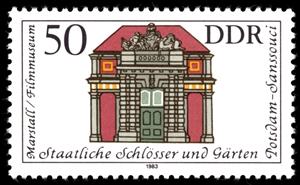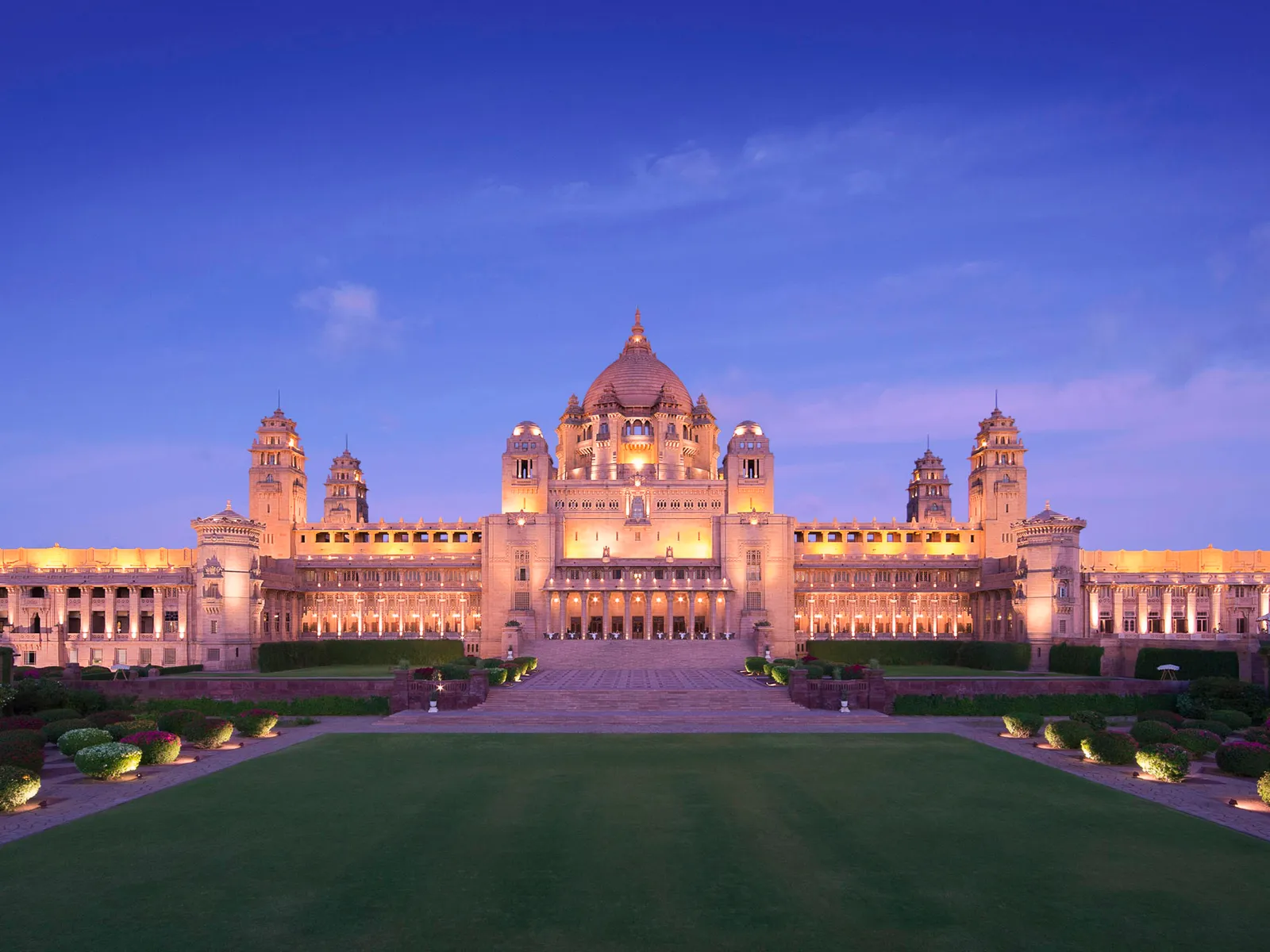Stamp: Stables / Filmmuseum (Germany, Democratic Republic 1983)
Stables / Filmmuseum (Germany, Democratic Republic 1983)
20 September (Germany, Democratic Republic ) within release Building Castles And Gardens Of Potsdam-Sanssouci goes into circulation Stamp Stables / Filmmuseum face value 50 East German pfennig
| Stamp Stables / Filmmuseum in catalogues | |
|---|---|
| Michel: | Mi:DDR 2829 |
| Yvert et Tellier: | Yt:DDR 2471 |
Stamp is horizontal format.
Also in the issue Building Castles And Gardens Of Potsdam-Sanssouci:
- Stamp - Sanssouci face value 10;
- Stamp - Chinese Tea House face value 20;
- Stamp - Charlottenhof face value 40;
- Stamp - Stables / Filmmuseum face value 50;
Stamp Stables / Filmmuseum it reflects the thematic directions:
A film (British English) – also called a movie (American English), motion picture, moving picture, picture, photoplay or (slang) flick – is a work of visual art that simulates experiences and otherwise communicates ideas, stories, perceptions, feelings, beauty, or atmosphere through the use of moving images. These images are generally accompanied by sound and, more rarely, other sensory stimulations. The word "cinema", short for cinematography, is often used to refer to filmmaking and the film industry, and the art form that is the result of it. form that is the result of it.
A museum (/mjuːˈziːəm/ mew-ZEE-əm) is an institution dedicated to displaying and/or preserving culturally or scientifically significant objects. Many museums have exhibitions of these objects on public display, and some have private collections that are used by researchers and specialists. Compared to a library, a museum hosts a much wider range of objects and usually focus around a specific theme such as the arts, science, natural history, local history, and other topics. Public museums that host exhibitions and interactive demonstrations are often considered to be tourist attractions, and many museums attract large numbers of visitors from outside their host country, with the most visited museums in the world regularly attracting millions of visitors annually.
A palace is a large residence, often serving as a royal residence or the home for a head of state or another high-ranking dignitary, such as a bishop or archbishop. The word is derived from the Latin name palātium, for Palatine Hill in Rome which housed the Imperial residences
A building or edifice is a structure with a roof and walls standing more or less permanently in one place, such as a house or factory. Buildings come in a variety of sizes, shapes and functions, and have been adapted throughout history for a wide number of factors, from building materials available, to weather conditions, to land prices, ground conditions, specific uses and aesthetic reasons. Buildings serve several needs of society – primarily as shelter from weather, security, living space, privacy, to store belongings, and to comfortably live and work. A building as a shelter represents a physical division of the human habitat (a place of comfort and safety) and the outside (a place that at times may be harsh and harmful).




